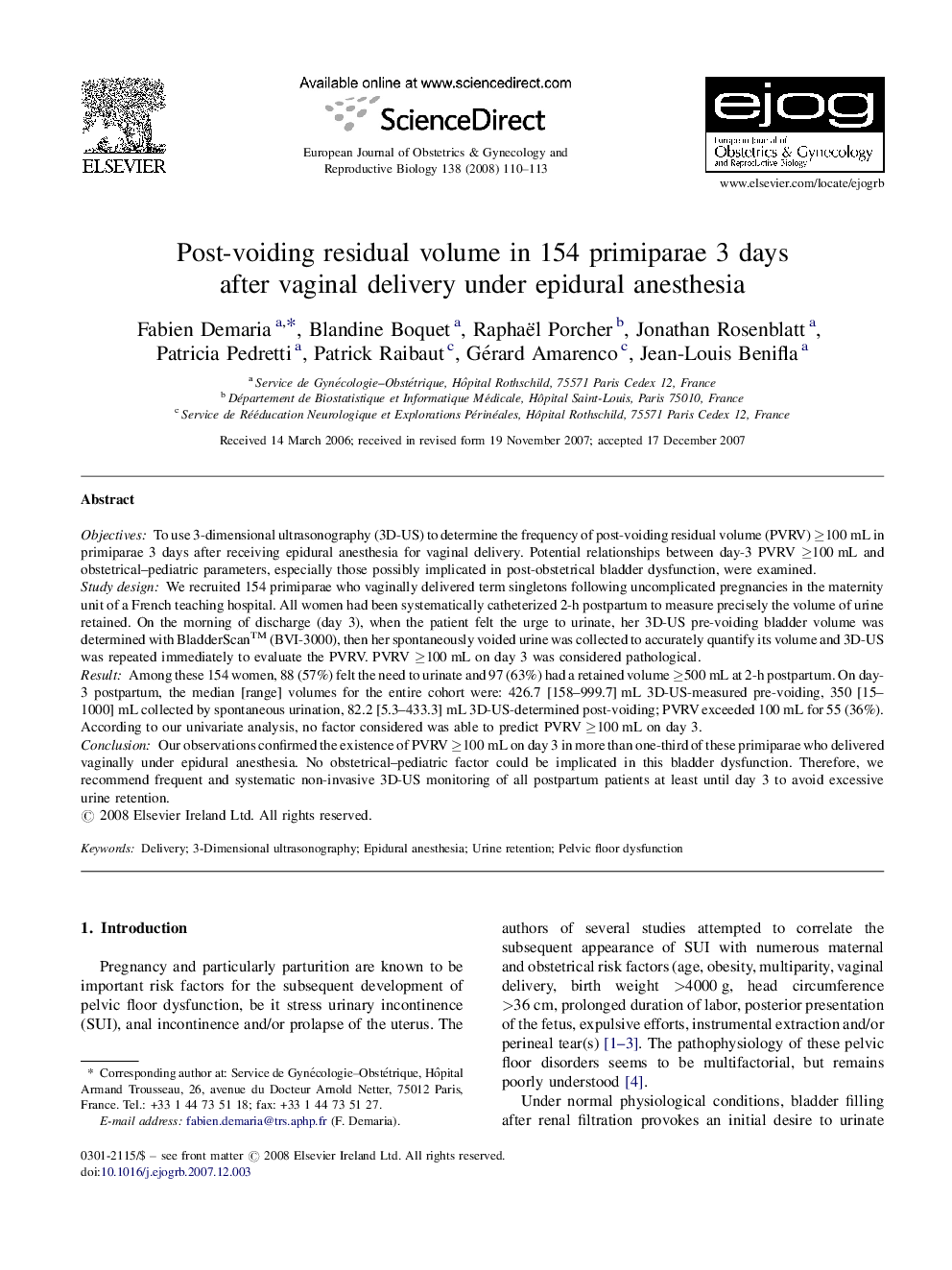| کد مقاله | کد نشریه | سال انتشار | مقاله انگلیسی | نسخه تمام متن |
|---|---|---|---|---|
| 3921368 | 1599878 | 2008 | 4 صفحه PDF | دانلود رایگان |

ObjectivesTo use 3-dimensional ultrasonography (3D-US) to determine the frequency of post-voiding residual volume (PVRV) ≥100 mL in primiparae 3 days after receiving epidural anesthesia for vaginal delivery. Potential relationships between day-3 PVRV ≥100 mL and obstetrical–pediatric parameters, especially those possibly implicated in post-obstetrical bladder dysfunction, were examined.Study designWe recruited 154 primiparae who vaginally delivered term singletons following uncomplicated pregnancies in the maternity unit of a French teaching hospital. All women had been systematically catheterized 2-h postpartum to measure precisely the volume of urine retained. On the morning of discharge (day 3), when the patient felt the urge to urinate, her 3D-US pre-voiding bladder volume was determined with BladderScan™ (BVI-3000), then her spontaneously voided urine was collected to accurately quantify its volume and 3D-US was repeated immediately to evaluate the PVRV. PVRV ≥100 mL on day 3 was considered pathological.ResultAmong these 154 women, 88 (57%) felt the need to urinate and 97 (63%) had a retained volume ≥500 mL at 2-h postpartum. On day-3 postpartum, the median [range] volumes for the entire cohort were: 426.7 [158–999.7] mL 3D-US-measured pre-voiding, 350 [15–1000] mL collected by spontaneous urination, 82.2 [5.3–433.3] mL 3D-US-determined post-voiding; PVRV exceeded 100 mL for 55 (36%). According to our univariate analysis, no factor considered was able to predict PVRV ≥100 mL on day 3.ConclusionOur observations confirmed the existence of PVRV ≥100 mL on day 3 in more than one-third of these primiparae who delivered vaginally under epidural anesthesia. No obstetrical–pediatric factor could be implicated in this bladder dysfunction. Therefore, we recommend frequent and systematic non-invasive 3D-US monitoring of all postpartum patients at least until day 3 to avoid excessive urine retention.
Journal: European Journal of Obstetrics & Gynecology and Reproductive Biology - Volume 138, Issue 1, May 2008, Pages 110–113